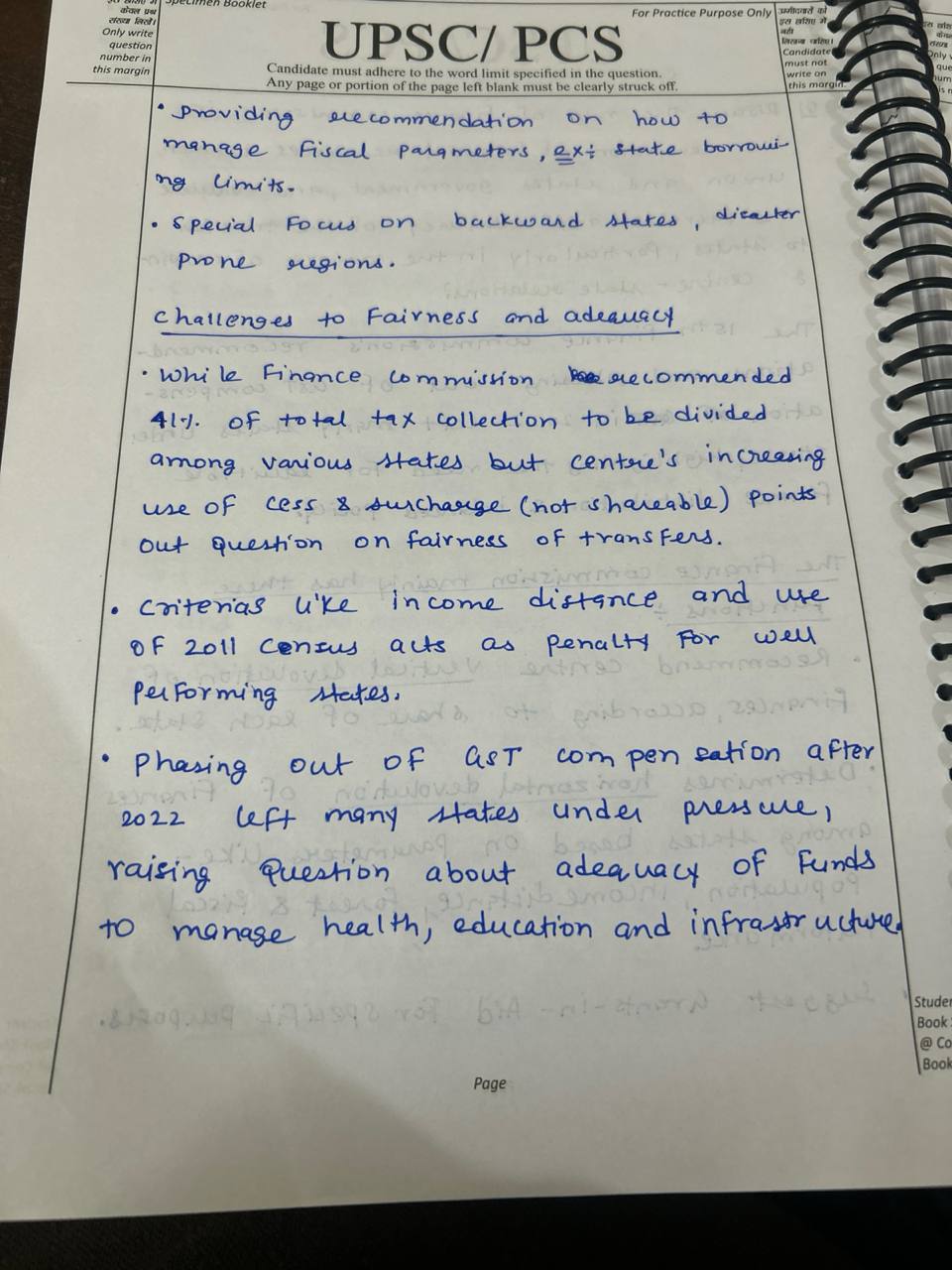Examine the RBI’s plans for fostering the growth of the domestic bond market, taking into account the changes implemented in the corporate and government securities markets, and assess how well they have worked to increase the depth and liquidity of ...
The Reserve Bank of India (RBI) has implemented several strategies to address the issue of non-performing assets (NPAs) in the banking sector, aiming to strengthen the resilience and health of the banking system. Let's analyze these strategies and their impacts: 1. Insolvency and Bankruptcy Code (IBRead more
The Reserve Bank of India (RBI) has implemented several strategies to address the issue of non-performing assets (NPAs) in the banking sector, aiming to strengthen the resilience and health of the banking system. Let’s analyze these strategies and their impacts:
1. Insolvency and Bankruptcy Code (IBC):
Objective: The IBC was introduced in 2016 to provide a time-bound framework for resolving insolvency among companies and individuals. It aims to maximize the value of assets, promote entrepreneurship, and ensure timely resolution of stressed assets.
Impact:
Speedy Resolution: The IBC has facilitated faster resolution of NPAs by setting strict timelines for resolution processes. This has helped in reducing the amount of time stressed assets remain on bank balance sheets.
Increased Recovery: Banks have been able to recover a higher proportion of their dues through the resolution process compared to earlier mechanisms.
Improved Credit Culture: The threat of insolvency proceedings has encouraged borrowers and lenders to adopt more disciplined credit practices, thereby reducing the incidence of future NPAs.
2. Prompt Corrective Action (PCA) Framework:
Objective: The PCA framework is a supervisory tool used by the RBI to monitor banks’ financial health based on certain performance indicators. It is triggered when banks breach specific thresholds related to capital adequacy, asset quality, profitability, and leverage ratio.
Impact:
Risk Mitigation: PCA helps in identifying weak banks early and initiating corrective actions to prevent further deterioration of their financial health.
Capital Conservation: Banks under PCA are restricted from expanding their operations and making risky investments, thereby conserving capital and focusing on resolving their NPAs.
Improving Governance: PCA encourages banks to strengthen their governance and risk management practices to comply with regulatory requirements.
3. Strengthening Regulatory and Supervisory Mechanisms:
Objective: The RBI has continuously enhanced its regulatory and supervisory framework to ensure early detection and resolution of NPAs. This includes improving asset classification norms, provisioning requirements, and stress testing exercises.
Impact:
Early Recognition: Improved asset quality review processes have helped in early identification of stressed assets, allowing banks to take timely corrective actions.
Provisioning Norms: Strengthened provisioning norms ensure that banks set aside adequate funds to cover potential losses arising from NPAs, thereby enhancing financial stability.
Enhanced Transparency: Regular disclosures and reporting requirements promote transparency and accountability in the banking sector, fostering investor confidence.
Assessment of Impact on Banking System:
Reduction in NPAs: The combination of IBC, PCA framework, and strengthened regulatory mechanisms has contributed to a reduction in NPAs over time.
Improved Capital Adequacy: Banks have strengthened their capital positions through increased recoveries and prudent risk management practices under the PCA framework.
Enhanced Resilience: The overall resilience of the banking sector has improved with a more proactive approach towards managing stressed assets and enhancing governance standards.
Challenges and Future Directions:
Legal and Operational Challenges: Implementation of the IBC has faced challenges related to legal proceedings, delays in resolution, and operational bottlenecks.
Need for Continuous Monitoring: The RBI needs to continuously monitor the effectiveness of these frameworks and adapt them to evolving market conditions and banking practices.
Support for Recovery: Enhancing the ecosystem for asset reconstruction and supporting distressed asset markets can further facilitate faster resolution of NPAs.
In conclusion, the RBI’s strategies including the IBC, PCA framework, and strengthened regulatory mechanisms have played a crucial role in addressing NPAs and improving the resilience of India’s banking sector. While these measures have shown positive results in reducing NPAs and enhancing governance, ongoing efforts are needed to address challenges and ensure sustainable improvements in the banking sector’s health.




RBI's Strategies to Promote the Development of the Domestic Bond Market The Reserve Bank of India (RBI) has implemented several strategies to enhance the development of the domestic bond market. These strategies focus on reforms in both the government securities market and the corporate bond market,Read more
RBI’s Strategies to Promote the Development of the Domestic Bond Market
The Reserve Bank of India (RBI) has implemented several strategies to enhance the development of the domestic bond market. These strategies focus on reforms in both the government securities market and the corporate bond market, aiming to improve market depth, liquidity, and overall efficiency. Below is an analysis of these strategies and their contributions to the financial markets.
1. Reforms in the Government Securities Market
Introduction of the Government Securities Act: The Government Securities Act, 2006, provides a legal framework for the issuance, trading, and settlement of government securities, promoting transparency and efficiency in the market.
Recent Developments:
Impact and Potential: These reforms have led to increased transparency and efficiency in the government securities market. The introduction of electronic platforms and improved trading mechanisms have contributed to deeper and more liquid government securities markets, attracting both domestic and international investors.
2. Reforms in the Corporate Bond Market
Development of the Corporate Bond Market: The RBI has undertaken several initiatives to develop the corporate bond market, which is crucial for providing long-term financing to businesses and enhancing market depth.
Recent Developments:
Impact and Potential: These reforms have significantly contributed to the development of the corporate bond market by increasing investor participation, improving market transparency, and enhancing liquidity. The introduction of the Retail Direct Scheme has made it easier for retail investors to participate in the corporate bond market, broadening the investor base and enhancing market depth.
3. Evaluation of RBI’s Strategies
Advantages:
Challenges:
In conclusion, the RBI’s strategies to promote the development of the domestic bond market, through reforms in the government securities market and the corporate bond market, have significantly enhanced the depth and liquidity of the financial markets. These measures have improved market efficiency, attracted a broader range of investors, and supported economic growth by providing better financing options for businesses and government entities.
See less